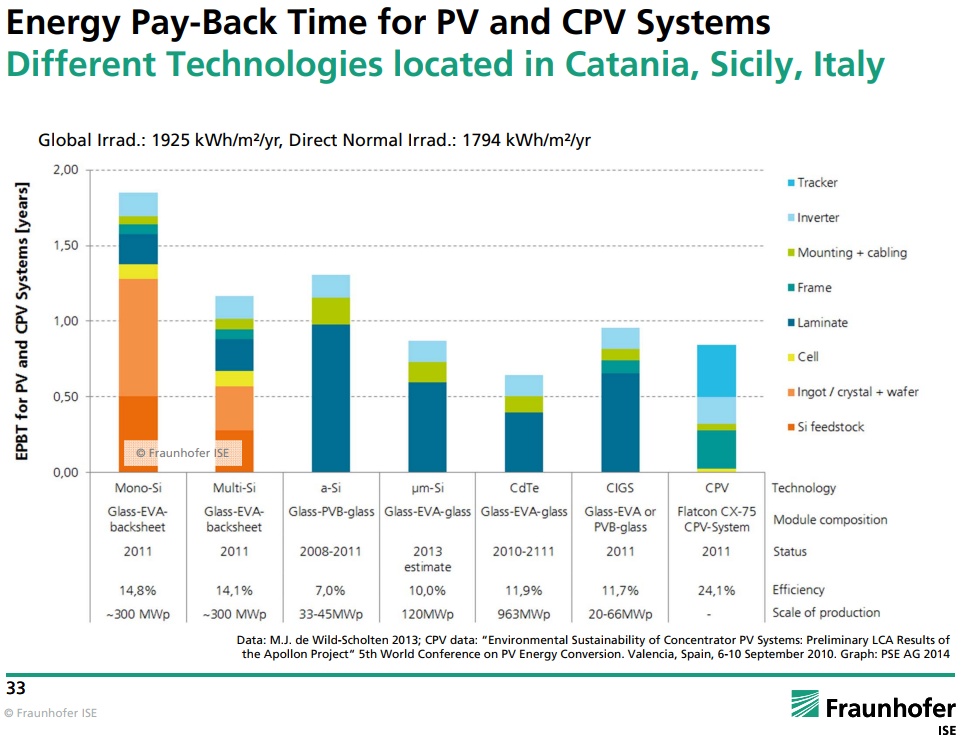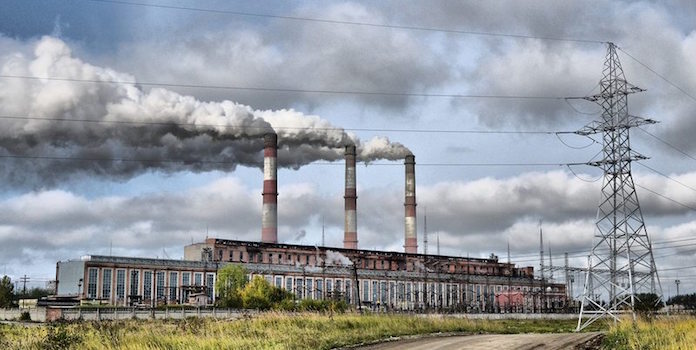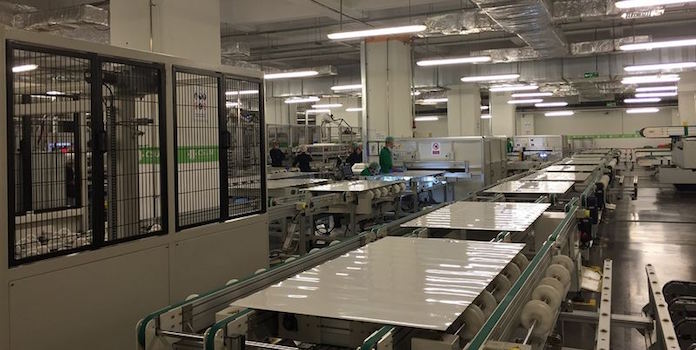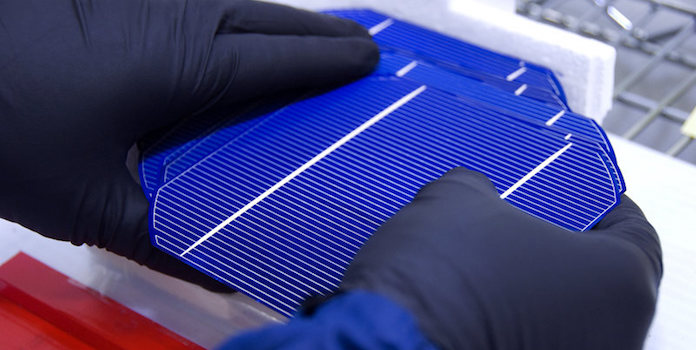Air Pollution: The Impact of Fossil Fuels vs Solar

Solar does contribute to air pollution, but its emission-free electricity production negates the manufacturing process
Pollution has been around in one shape or another for as long as humans have been walking upright and building fires. Although those early campfires were unlikely to cause any real air pollution or lasting threat to the health of the planet, things have only gotten worse.
If we take a look back through history, people have long recognized air pollution as a serious threat that can shorten the lives of people around the world because they are breathing in harmful chemicals and particulates.
A brief history of air pollution
Acting as a major milestone for air pollution, the Industrial Revolution springboarded the use of technologies that would ultimately cause as much pain and suffering as they benefited the people of that time.
Coal-fired power plants became the largest source of power during that period, and with no method to control the byproducts produced by burning coal, smog and soot soon filled the air around those plants. These plants, usually situated in large cities, caused some of the earliest air pollution-related incidents that resulted in the death of people and destruction of the environment, such as:
The Great Smog of 1952 – In this tragic event, pollutants from both homes and factories mixed with air condensation which resulted in the deaths of at least 4,000 people in London over a seven-day span, with up to 8,000 more dying of related issues later on.
Donora, Pennsylvania – In 1948, severe air pollution killed 20 people by asphyxiation and sickened thousands more.
Acid Rain – Sulfur and nitrogen compounds, produced by coal-powered plants, cause this phenomenon that dramatically impacts fish, soil, plants, and forests by acidifying the ground and water.
Regardless of whether or not you believe in global climate change, it is impossible to to deny that air pollution, especially when caused by burning fossil fuels, has caused many deaths due to its byproducts.
Air pollution in the United States today
To be fair, there have been a lot of advances on both the regulatory and technological side when it comes to air pollution. In fact, the tragic incidents that I just mentioned helped push for the creation of the Clean Air Act, as well as other laws, meant to curtail harmful emissions that lead to worsening air pollution.
By most accounts, it looks like those regulations have been working — air pollution in the United States has been decreasing for decades. Since the peak of air pollution, in fact, the Environmental Protection Agency says that total emissions for the six biggest air pollutants have dropped by 67 percent since 1980.
Although this is great news, there is still a lot of work to be done. The air quality in the United States is still not where it needs to be to avoid life-shortening effects.
Life-shortening effects of air pollution
According to recent research from MIT, air pollution causes the early death of as many as 200,000 people each year in the US alone, with power generation responsible for at least 25% of the emissions that led to the problems. Just because we don’t see dramatic smog and soot cloud events doesn’t mean that there aren’t particles in the air that are harmful to us as humans.
In fact, despite the drop in pollutants since the 80’s, scientists are saying that we are still above safety levels in the US, and even small amounts can produce measurable declines in lifespan.
According to a paper in the New England Journal of Medicine, two of the biggest culprits of air pollution, ozone and particulate matter called PM25, are associated with mortality increases of 1.1% and 7.3%, respectively, with only a 10 ppb (parts per billion) rise in the measurements.
How do fossil fuels contribute to air pollution?
As we’ve discussed previously, even burning wood at a campfire can release pollutants into the atmosphere, however small the amount, but we haven’t talked specifically about how the majority of the contaminants are finding their way into the air we breathe.
The Environmental Protection Agency defines and tracks six of the most common pollutants, called “criteria air pollutants,” and sets National Ambient Air Quality Standards for them periodically. All of these pollutants harm both our health and the environment, and each one is linked to the burning of fossil fuels for energy.
Ozone – This compound is created when nitrogen oxides (NOx) react with volatile organic compounds (VOCs) in sunlight. Although they do not emit ozone directly, industrial facilities, motor vehicle exhaust, chemical solvents, electric utilities, and gasoline vapors are all significant sources of both NOx and VOCs. Breathing ozone can cause or irritate existing respiratory problems.
Particulate Matter – Often labeled as either PM2.5 or PM10, particulates categorize the mixture of solids and liquids that mix into the air we breathe. Dust, soot, smoke, dirt, etc., fall into this group and are easily seen by the naked eye, but others can be too small to notice.
Many of these little particles form in the upper atmosphere because of reactions between chemicals like sulfur dioxide and nitrogen oxides, which we already know are emitted from power plants and vehicles.
Carbon Monoxide – Most people are familiar with carbon monoxide (CO) and its effect on the environment. It is produced whenever something is burned, with the majority of CO in our environment coming from fossil fuel-burning machinery like vehicles.
Because it is also produced from kerosene or gas space heaters and chimneys, CO is also one of the most dangerous pollutants of indoor air pollution.
Lead – Extremely harmful to humans, especially children, lead is released into the air primarily when processing metals or burning leaded aviation fuel.
Sulfur Dioxide -The biggest producers of sulfur dioxide (SO2) are fossil fuel burning power plants and other industrial facilities. Heavy equipment that burns gas with higher sulfur content also contribute. SO2 can harm the human respiratory system as well as contribute to acid rain.
Nitrogen Dioxide – As we mentioned with the particulates, nitrogen dioxide reacts in the atmosphere to produce dangerous compounds. On its own, it can also irritate airways and cause greater problems in people with respiratory issues. It gets into the air mostly from the burning of fuel in cars and power plants.
As you can see, there isn’t a single common pollutant that isn’t directly linked to the burning of fossil fuels. Even though there have been advancements in filters and other equipment to reduce the emissions, it is almost impossible to have zero emissions from fossil fuel energy.
How does solar power contribute to air pollution?
This is the tricky part.
You could probably guess that solar power doesn’t directly contribute to air pollution because it is simply collecting energy passively from the sun rather than burning a fuel source to get the energy. The issue with solar, then, is not what happens after you’ve installed the system but rather what happens beforehand.
Just like anything else crafted, manufactured, or built, solar panels use up raw materials and energy during the assembly process. Since they are not going to be creating emissions once they are operating, we’ll judge solar’s air pollution contribution by how much emission-causing energy goes into making them and how the actual manufacturing process could introduce pollutants into the environment.
Energy payback time of solar panels
Unlike most manufactured goods, solar panels actually have a chance to pay back their energy cost over time after they are created! This allows solar panels, wind turbines, hydroelectric dams, etc. to actually reduce air pollution over their lifetimes – even if pollution is created during their manufacturing process. The question is, how long exactly does it take for a panel to “pay for itself”?
According to recent research by the Fraunhofer Institute for Solar Energy Systems in Germany, it only takes 1 to 3.5 years (pg. 32) for modern solar panels to pay back the energy required to build them. This study looked at a variety of different solar technologies, and included the energy costs of everything in the system including inverters, mounting materials, laminates, frames, the solar cells, silicon wafers, and the silicon itself.
At first glance, only needing a couple years to pay back the energy required to make a solar panel is a pretty impressive statistic. But to get a different perspective, think about how long those panels should operate. In the German study, they assumed a lifespan of 30 or more years, which means that the solar panels would be producing totally clean energy for about 95% of their lifetime.
Wow.
For reference, here is a great chart from the research that shows how all of the different technologies stack up on their energy costs.

Image courtesy of Fraunhofer Institute for Solar Energy Systems. – ©Fraunhofer ISE: Photovoltaics Report, updated: 12 July 2017.
Note: For a primer on the different solar technologies mentioned above, check out our info on thin-film solar and the different kinds of solar panels available!
Despite having to rely on fossil fuels to produce our solar panels currently, it is comforting to know that they can pay off their energy debt in short order. If we stop here, however, we’re only telling part of the story. Using those solar panels for 30 years also means that you will be using less power from your local utility. When enough of us use solar and reduce our energy consumption, power plants will produce less power and less air pollution each year.
According to the National Renewable Energy Laboratory (pg.2), a typical U.S. household uses about 830 kWh of electricity each month. If you had a solar system on your rooftop producing 1,000 kWh of energy, there is a huge opportunity to reduce emissions. NREL calculates that you’ll avoid the following:
Per year:
- 5 pounds of Nitrogen Oxides – one of the top six pollutants
- 8 pounds of Sulfur Dioxide – another of the top six pollutants
- 1,400 pounds of Carbon Dioxide – a greenhouse gas that contributes to climate change and global warming.
And that really adds up! Over an estimated 28-year lifespan, that’s:
- 1/3 ton of Nitrogen Oxides
- 1/2 ton of Sulfur Dioxide
- 100 tons of carbon dioxide
In fact, it’s estimated that if solar power completely replaced fossil fuels, we could reduce air pollution and greenhouse gas emissions by nearly 90%.
It’s amazing to think that during the lifetime of your solar panels, you can quickly pay back the energy costs of solar, generate completely green energy, pay back the cost of ownership and generate real profit, and offset tons of harmful air pollutants all at the same time!
Side effects of the current manufacturing process
Just because solar panels are able to offset their energy costs quickly doesn’t mean that there isn’t a potential for them to introduce their own pollutants into the environment. Solar panels require a complex, multi-stage process to manufacture — and unfortunately, there are many chemicals and chemical byproducts that require special handling during the manufacturing process.
We should point out, however, that none of these dangers are present at anywhere near the levels that traditional fossil fuel-based power plants are emitting pollutants. In most cases, there is also a way to prevent or avoid releasing the chemicals into the environment.
We’ll take a look at silicon-based solar panels, as they are the most common, to explore the most dangerous side effects of solar:
Silane gas – Used in the refinement of the initial block of silicon, silane gas is extremely flammable and creates an explosion hazard in manufacturing plants.
Silicon Tetrachloride – A byproduct of silicon refinement, this substance will react violently with water and causes issues with human contact. This chemical can be easily recovered and reused although areas with little or no regulation, such as China, have seen problems with dumping.
Sulfur Hexafluoride – Used to clean the reactors that produce and refine silicon, this chemical is said to be the most potent greenhouse gas on the planet and is 25,000 times worse than carbon dioxide (pg. 10). This is the single biggest environmental threat from solar production, and finding a replacement is one of the greatest priorities in the industry.
Other chemicals – Less prevalent and dangerous, other chemicals such as sodium hydroxide, hydrochloric acid, sulfuric acid, phosphine, arsine, lead, silver, and aluminum are also used in the process to create solar panels and are found in various amounts in the finished product.
Although this list looks worrisome, it is important to point out that many of these byproducts are also found in conventional electronic goods like TVs and computers. As we’ve already mentioned, many of these chemicals can be contained, and the industry is working hard to find substitutes for the worst offenders.
Note: Cadmium, an extremely toxic heavy metal involved in Cadmium Telluride (CdTe) solar panel manufacturing often mentioned as a deadly side effect of solar, is another byproduct that should be mentioned. Although there is the potential for it to find its way into the environment when the solar cells are discarded, it should be pointed out that coal-fired power plants emit 360 times more cadmium per kWh produced than solar panels.
Changes in how photovoltaic cells are produced
Just like in the early days of fossil fuel-powered power plants, solar power is in a transitional phase where new technology is being discovered and existing technology is being refined.
Nobody can be sure what solar technology will look like over the coming decades, but it is clear that the industry is taking notice of the issues that it faces concerning pollution. The face of green energy can’t bear to have a mark on it when it comes to environmental protection!
According to research at the Institute of Electrical and Electronics Engineers (IEEE), pollution in the solar industry is a relatively new phenomenon. In the early days, most manufacturers got by with leftover silicon wafers from the computer industry.
With the boom in solar power over the past few decades, solar capacity in megawatt-peak has risen from 105 in 1992 to 368,000 in 2017; producers had to scramble to build factories to meet the demand of global consumers.
Unfortunately, many of these factories opened in China and had little or no regulation regarding environmental protection. A few high-profile reports of big players like Luoyang Zhonggui High-Technology Company in China have put a spotlight on what can happen if producers are left unchecked with their disposal methods for silicon tetrachloride.
These tragic events have helped to shape up the major players in the solar industry. China, for example, put standards in place back in 2011 requiring 98.5 percent of their silicon tetrachloride waste to be recycled.
Formal environmental performance goals
Moving forward, new advances in technology are reducing our dependency on dangerous chemicals, while regulators and companies alike are taking safety very seriously to keep solar energy as green as possible. Formal environmental performance ratings are starting to emerge as several groups are taking matters into their own hands. Here are a few examples:
Yale’s Environmental Performance Index – This index rates and ranks all of the countries across the world on environmental issues such as air quality, water sanitation, agriculture, forests, and more. It also highlights changes from year to year so that readers can see progress or steps backward.
Solar Energy Industries Association (SEIA)’s Solar Industry Environment and Social Responsibility Commitment – This is a standard submitted by the United States-based agency that seeks to provide a framework for continuous improvement, reporting, and transparency within the solar industry.
Silicon Valley Toxics Coalition’s Scorecard – This scorecard recognizes that massive growth in the solar industry has led to issues that could impact the environment. It uses a comprehensive method to rate over 40 different solar panel producers around the world.
It also lists current standards and how many companies are meeting them. This is truly a pro-environmental coalition that will help solar in the long run!
As groups like these gain momentum, it will lead to more and better changes that will help keep solar power a truly green technology!
Green technologies in the future
Although it would be impossible to completely prevent humans from adversely impacting the earth and its environment, it’s clear that moving towards greener technologies like solar would be a significant step in the right direction compared to how fossil fuel-powered utilities are currently polluting the air. It is certainly possible to reduce emissions from burning fossil fuels, but they can never truly get to zero.
At some point in the not-to-distant future, we could be producing solar panels by using solar power, and it will create a truly green cycle of energy production that we can carry forward for generations to come.
I, for one, can’t wait to see that future!
Image Credits under CC License via Pixabay – 1, 2, 3, 4, 6 & Flickr – 5





